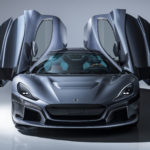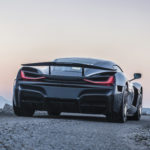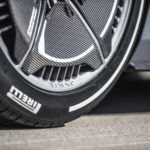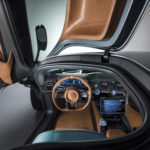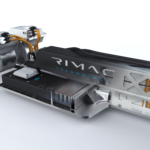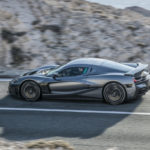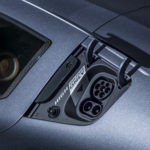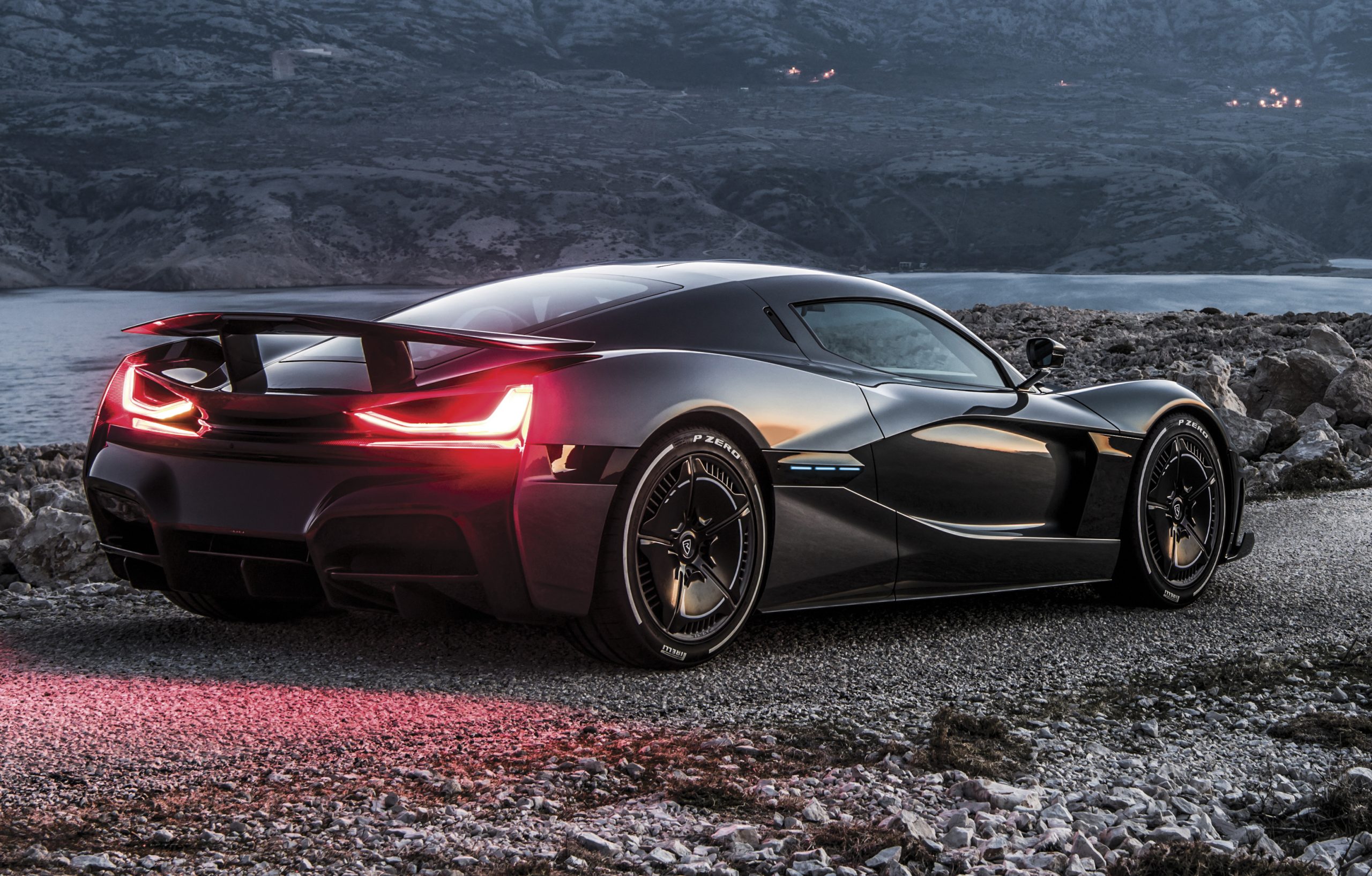
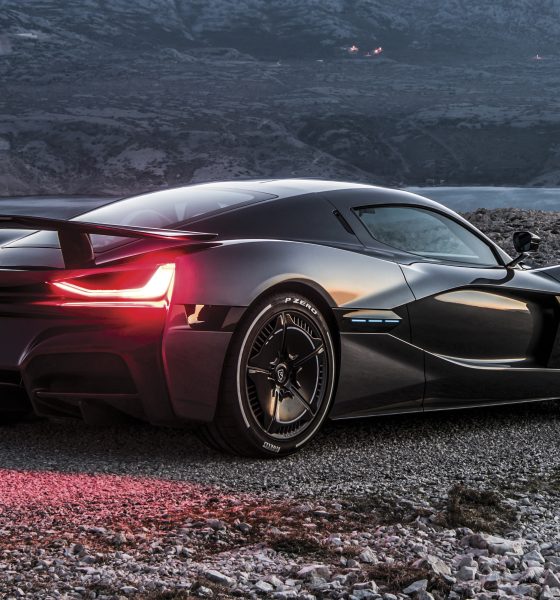
Lifestyle
Tesla Roadster rival Rimac C_Two boasts 0-60 in 1.85 secs and 1,914 HP
Rimac’s latest teaser videos of its C_Two hypercar just revealed that the all-electric hypercar could go from 0-60 mph in 1.85 seconds, besting the numbers set by Tesla’s next-generation Roadster. The C_Two also boasts a 130 kW battery, 1,914 hp and 2,300 ft-lbs of torque.
Rimac has been very deliberate about revealing the specs of its latest creation. Prior to the reveal of the hypercar, very little information apart from its horsepower and 0-60 mph rating were revealed. YouTuber Shmee150, however, was given early access to the vehicle, and he was able to outline several of the C_Two’s features. According to the YouTuber, the Rimac C-Two features facial recognition as a means to access the vehicle, as well as up to 400 sensors that enable it to achieve Level 4 autonomy in the future. Unlike its predecessor, which only had eight production units, Rimac reportedly plans to build 150 units of the C_Two.
The 0-60 mph performance of the C_Two is particularly noteworthy, especially since the figures seem designed to best the current 0-60 benchmark of all production cars — the next-generation Tesla Roadster, which is capable of hitting 60 mph in 1.9 seconds. Rimac’s 0-60 mph teaser, however, stated that the C_Two’s 1.85-second time included a one-foot rollout.
- Rimac’s C_Two hypercar is expected to be among the fastest-accelerating vehicles on the road today.
It is also important to note that the next-gen Roadster’s 1.9-second 0-60 time is true for the all-electric supercar’s base model. Considering that the Elon Musk-led firm is expected to release a Performance-tuned variant of the Roadster when it gets released in 2020, the limits of the next-gen Tesla’s 0-60 mph time would likely best its 1.9 second time.
Nevertheless, the raw power of the C_Two is impressive at a claimed 1,914 hp. This corresponds to more than 450 hp to each of the hypercar’s wheels, provided that the C_Two follows its predecessor’s individual-wheel-drive (IWD) setup. The C_Two’s 2,300 Nm of torque, however, is 77% less than the 10,000 Nm of torque that is featured in the next-generation Tesla Roadster. Its 130 kW battery is also 35% smaller than the next-gen Roadster’s 200 kW pack.
As we noted in a previous report, the Concept_One, Rimac’s first automobile, was a formidable mix of technology and automotive craftsmanship. With four electric motors producing a combined 1,088 hp and a two-speed gearbox, the Concept_One was a vehicle that could stand toe-to-toe with the best that the conventional auto industry has to offer. In drag races alone, it overcame opponents such as the Porsche 918 Spyder and the Ferrari LaFerrari.
While its hypercar-beating specs and performance were undeniable, however, the Concept_One was also incredibly expensive and limited. During the course of its production, only eight Concept_Ones were built by the Croatian automaker, with each vehicle commanding a formidable $1.2-million price tag. In comparison, the next-generation Tesla Roadster is priced at a far more affordable price, starting at $200,000 for the base model and $250,000 for the Founders’ Series variant.

Lifestyle
Tesla Model S Plaid battles China’s 1500 hp monster Nurburgring monster, with surprising results
There is just something about Tesla’s tuning and refinement that makes raw specs seem not as game-changing.

The Tesla Model S Plaid has been around for some time. Today, it is no longer the world’s quickest four-door electric sedan, nor is it the most powerful. As per a recent video from motoring YouTube channel Carwow, however, it seems like the Model S Plaid is still more than a match for some of its newer and more powerful rivals.
The monster from China
The Xiaomi SU7 Ultra is nothing short of a monster. Just like the Model S Plaid, it features three motors. It also has 1,548 hp and 1,770 Nm of torque. It’s All Wheel Drive and weighs a hefty 2,360 kg. The vehicle, which costs just about the equivalent of £55,000, has been recorded setting an insane 7:04.957 at the Nurburgring, surpassing the previous record held by the Porsche Taycan Turbo GT.
For all intents and purposes, the Model S Plaid looked outgunned in Carwow’s test. The Model S Plaid is no slouch with its three motors that produce 1,020 hp and 1,420 Nm of torque. It’s also a bit lighter at 2,190 kg despite its larger size. However, as the Carwow host pointed out, the Model S Plaid holds a 7:25.231 record in the Nurburgring. Compared to the Xiaomi SU7 Ultra’s record, the Model S Plaid’s lap time is notably slower.
Real-world tests
As could be seen in Carwow’s drag races, however, Tesla’s tech wizardry with the Model S Plaid is still hard to beat. The two vehicles competed in nine races, and the older Model S Plaid actually beat its newer, more powerful counterpart from China several times. At one point in the race, the Xiaomi SU7 Ultra hit its power limit due to its battery’s temperature, but the Model S Plaid was still going strong.
The Model S Plaid was first teased five years ago, in September 2020 during Tesla’s Battery Day. Since then, cars like the Lucid Air Sapphire and the Xiaomi SU7 Ultra have been released, surpassing its specs. But just like the Model Y ended up being the better all-rounder compared to the BYD Sealion 7 and the MG IM6, there is just something about Tesla’s tuning and refinement that makes raw specs seem not as game-changing.
Check out Carwow’s Model S Plaid vs Xiaomi SU7 drag race video below.
Lifestyle
500-mile test proves why Tesla Model Y still humiliates rivals in Europe
On paper, the BYD Sealion 7 and MG IM6 promised standout capabilities against the Model Y.

BYD is seeing a lot of momentum in Europe, so much so that mainstream media has taken every opportunity to argue that the Chinese automaker has beaten Tesla in the region. But while BYD sales this year in Europe are rising and Tesla’s registrations remain challenged, the raw capabilities of vehicles like the Model Y are difficult to deny.
This was highlighted in a 500-mile challenge by What Car? magazine, which showed that the new Tesla Model Y is more efficient, cheaper to run, and more reliable than rivals like the BYD Sealion 7, and even the nearly 400 KW-charging MG IM6.
Range and charging promises
On paper, the BYD Sealion 7 and MG IM6 promised standout capabilities against the Model Y. The Sealion 7 had more estimated range and the IM6 promised significantly faster charging. When faced with real-world conditions, however, it was still the Model Y that proved superior.
During the 500-mile test, the BYD nearly failed to reach a charging stop, arriving with less range than its display projected, as noted in a CarUp report. MG fared better, but its charging speeds never reached its promised nearly-400 kW charging speed. Tesla’s Model Y, by comparison, managed energy calculations precisely and arrived at each stop without issue.
Tesla leads in areas that matter
Charging times from 25% to 80% showed that the MG was the fastest at 17 minutes, while Tesla and BYD were close at 28 and 29 minutes, respectively. Overall efficiency and cost told a different story, however. The Model Y consumed 19.4 kWh per 100 km, compared to 22.2 for MG and 23.9 for BYD. Over the full trip, Tesla’s charging costs totaled just £82 thanks to its supercharger network, far below BYD’s £130 and MG’s £119.
What Car? Magazine’s testers concluded that despite BYD’s rapid sales growth and the MG IM6’s seriously impressive charging speeds, Tesla remains the more compelling real-world choice. The Model Y just offers stability, efficiency, and a proven charging infrastructure through its Supercharging network. And as per the magazine’s hosts, the Model Y is even the cheapest car to own among the three that were tested.
Watch What Car? Magazine’s 500-mile test in the video below.
Lifestyle
Tesla Cybertruck slapped with world’s least intimidating ticket, and it’s pure cringe
One cannot help but cringe and feel second-hand embarrassment at the idea of a person just driving around with a stack of these babies.

A Cybertruck parked at Stanford Shopping Center in California was recently hit with what might be the most try-hard piece of paper ever slipped under a wiper blade: a “fake citation” accusing the driver of supporting a “fascist car.”
The note, shared on X by Tesla staff program manager Ryan Torres, quickly made the rounds on X, where it quickly gained attention as an example of how not to protest.
The world’s least intimidating ticket
According to the citation, the supposed “violation” was “driving a fascist car.” The remedial action? Take the bus, call an Uber, or ride a bike. The note also dubbed Elon Musk a “chainsaw-wielding Nazi billionaire.” Now, protests against Tesla and Elon Musk have become commonplace this year, but one cannot help but cringe and feel second-hand embarrassment at the idea of a person just driving around with a stack of fake anti-Tesla/Musk citations.
Torres pointed out the irony himself in his post on X. Tesla currently employs over 140,000 Americans, and SpaceX has put the U.S. firmly back at the top of space technology. As Torres put it, maybe the person behind the world’s least intimidating ticket should “read a book on innovation before vandalizing” other people’s property.
Peak performative clownery
Not to mention that the fake ticket’s logic collapses under its own weight. EVs like the Cybertruck are literally designed to reduce emissions, not “destroy the economy.” If anything, Tesla has bolstered the United States’ economy by fueling jobs in engineering, manufacturing, and clean energy. It’s not the first time a Tesla has been the target of vandalism or politically charged notes, but this one stands out for sheer cringe value.
Torres summed it up neatly: “Peak clownery.” On that point, at least, the citation earns full marks. In a way, though, perhaps cringe fake tickets are not as bad as the literal firebombs that were being thrown at Tesla stores and cars earlier this year because some critics were gleefully misinformed about Elon Musk.
